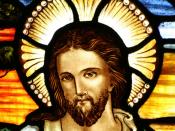In Edmund Spenser's The Faerie Queene, there are many ideas in which Spenser himself strongly believes in. Specifically, the holiness of the Protestant Church versus the wickedness of the Catholic Church, and the power of Satan versus the power of God. The power of ÃÂsculapius (Canto 5) and the power of the Tree of Life and the Well of Life (Canto 11) might look similar from a distance in terms of magical magnificence, but the task which they complete (restoration of health) are perceived similarly which only serve to highlight their differences. ÃÂsculapius represents an evil form of 'magic' that restores life illegally (from Hell), whereas the Tree of Life and the Well of Life restore health through Divine Intervention (God's grace) in order to help one defeat sin and evilness.
In Book One, Canto 5 the Redcrosse knight has already been lead to the House of Pride by Duessa and is now waiting for dawn - by order of the Queen of the palace, Lucifera - in order to duel Sansjoy.
When dawn finally breaks the two men ride out to begin the fight as the entire court stands by watching intently. Both opponents are severely wounded, however, Redcrosse ultimately proves he is the stronger soldier and is about to kill Sansjoy - but he miraculously disappears in a dark cloud. Redcrosse is then put to bed and receives immediate attention from doctors in order to heal his wounds. Duessa mourns the loss of Sansjoy bitterly and is so overcome with her sorrow that she seeks the witch 'Night.' Together, they collect Sansjoy's body and they travel into Hell "And brought the heavie corse with easie pace/ To yawning gulfe of deepe Avernus hole" (1.5.ll. 272-273) in order to find the God of Medicine, ÃÂsculapius. As Duessa and Night...


